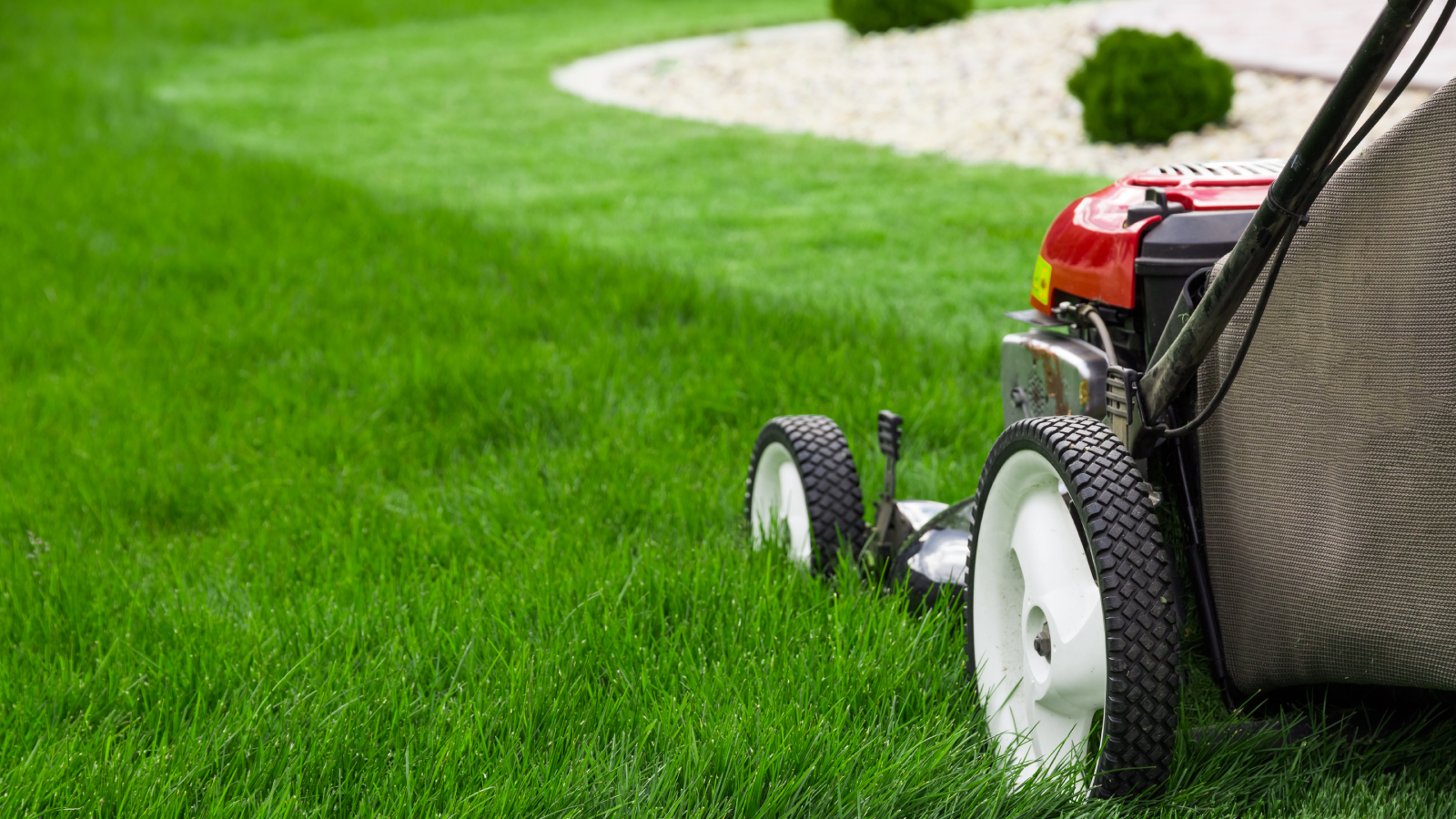Everything You Ever Needed To Know About How To Mow A Lawn
Mowing lawns properly is a requirement for healthy, vibrant turf and can be perfected with a few easy steps. Learn more about how to mow your lawn correctly.


Mowing the lawn is a typical suburban chore, but it’s more complicated than most people realize. Knowing how to mow a lawn correctly is an important aspect of growing and maintaining lush, green turf.
Different types of turf grass species are used in various climates in shady versus sunny yards, but all should be mowed regularly. The main differences are mowing height and time. Know your grass type to optimize mowing strategies and improve your lawn care.
Why Should You Mow Your Lawn?
Left to grow out of control, any type of turf grass turns into a meadow. This might be pretty and low maintenance, but it also harbors disease-carrying ticks and violates many homeowner association rules.
Mowing regularly, but not too often, is ideal for maintaining a healthy, attractive lawn. If you want a more natural lawn, consider letting small areas of your grass become a meadow lawn, or plant more native perennials in place of turf grass.
When You Should Mow Your Lawn
When to start mowing the lawn is at the front of many homeowners' minds as soon as the weather begins to turn towards spring. Most cool-season grasses need more cutting in spring and fall and tend to go dormant in summer. You can cut these grasses less frequently in summer and they should generally be kept at a higher height than most warm-season grasses.
Warm-season grasses grow during hot weather and go dormant during the cooler shoulder seasons and winter. Both types of grasses should be mowed more frequently during their growing seasons. Even in the warmest climates, grasses go dormant in winter and should not be mowed.
How Often to Mow a Lawn
The correct frequency of mowing depends on the height of the grass. Your grass will grow more or less depending on the season, temperatures, and rainfall. Most cool-season grasses should be maintained at a height of about three inches (7.5 cm), while warm-season grasses are better at one to two inches (2.5 to 5.0 cm).
Sign up for the Gardening Know How newsletter today and receive a free copy of our e-book "How to Grow Delicious Tomatoes".
Knowing how to mow the lawn like a pro has a lot to do with timing. Don’t stick to a rigid mowing schedule. The height of the grass should dictate when you mow. With cool-season grasses, you might be mowing a few times per week in the spring and only once every two weeks in summer.
How Much to Cut a Lawn at One Time

It may be tempting to take your grass down to a neat, tidy level, but never cut more than one-third of the height of your grass at one time. Keeping the grass a little on the long side helps suppress weeds and allows the grass to grow stronger, deeper roots.
Additional Tips for How to Cut the Lawn Correctly
Good lawn mowing care starts with your machine. Keep your mower in good condition with an annual tune-up. This should include regular blade sharpening. Dull blades damage grass and make it more susceptible to disease.
Knowing how to mow your lawn in stripes and circles is about more than creating pretty patterns. Change up the direction and pattern each time you mow to keep grass blades growing upright and prevent soil compaction.
As long as you follow the one-third rule and never cut too much of the grass at one time, you can leave the clippings in place. They decompose readily and provide nutrients. If the lawn has gotten out of control and needs a more severe cut, it’s better to remove the clippings. Excessive clippings can smother the grass and create thatch.
Frequently Asked Questions
What is the Best Time of Day to Mow the Lawn?
Mid-morning is an ideal time of day to mow. The lawn is often wet early in the morning, which can leave clumps and ruts. Midday and afternoon are often too hot, which stresses the turf. Mid-morning allows the grass to recover by evening.
How Often is Too Often to Mow Your Lawn?
The frequency of mowing changes with the weather and the season. You are mowing too often if the grass is shorter than recommended for its type.
Should You Leave Grass Clippings on Your Lawn?
You can and should leave clippings on the lawn as long as you do not trim too much of the height of the grass.

Mary Ellen Ellis has been gardening for over 20 years. With degrees in Chemistry and Biology, Mary Ellen's specialties are flowers, native plants, and herbs.